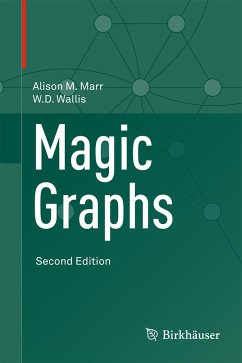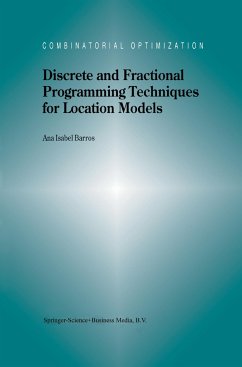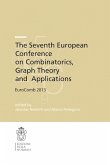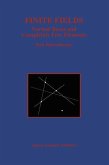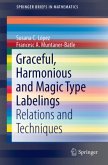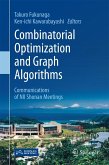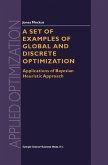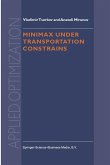Magic squares are among the more popular mathematical recreations. Over the last 50 years, many generalizations of "magic" ideas have been applied to graphs. Recently there has been a resurgence of interest in "magic labelings" due to a number of results that have applications to the problem of decomposing graphs into trees.
Key features of this second edition include:
· a new chapter on magic labeling of directed graphs
· applications of theorems from graph theory and interesting counting arguments
· new research problems and exercises covering a range of difficulties
· a fully updated bibliography and index
This concise, self-contained exposition is unique in its focus on the theory of magic graphs/labelings. It may serve as a graduate or advanced undergraduate text for courses in mathematics or computer science, and as reference for the researcher.
Key features of this second edition include:
· a new chapter on magic labeling of directed graphs
· applications of theorems from graph theory and interesting counting arguments
· new research problems and exercises covering a range of difficulties
· a fully updated bibliography and index
This concise, self-contained exposition is unique in its focus on the theory of magic graphs/labelings. It may serve as a graduate or advanced undergraduate text for courses in mathematics or computer science, and as reference for the researcher.
From the book reviews:
"The text contains a plethora of exercises and very often research problems are stated. At the end of the book some selected exercises are solved. ... We warmly recommend this book for those students, from high school to graduate school, who love elementary problems, combinatorial ideas and deep problems. Teachers, researchers can find many project ideas for REU (Research Experiences for Undergraduates programs) and challenging open problems too." (Péter Hajnal, Acta Scientiarum Mathematicarum (Szeged), Vol. 80 (1-2), 2014)
"The book is intended mainly for post-graduate students and for young researchers in the graph theory field. ... The style of presentation is good. ... Throughout the text there are exercises and research problems. ... The book also includes answers to selected exercises, and closes with the index, which can be very useful to the reader for fixing terminology. The present book is a beautiful collection of the current results on 'magic labelings'." (Martin Baca, Mathematical Reviews, June, 2013)
"The book Magic Graphs, is self-contained, good, admirably clear, and a stimulating and very well written. This concise text-book is the only book of its kind in the area of magic graphs/labeling, it contains numerous exercises, and their solutions, and includes updates on new research in the field. ... describe the main concepts of magic graphs and labeling, together with full proofs that would be both accessible to beginners and useful for graduate and advanced undergraduate ... and as reference for the researcher." (Francisco José Cano Sevilla, The European Mathematical Society, April, 2013)
"The second edition of Magic Graphs by the authors is a revised and expanded version of its earlier edition ... . This current volume includes new research problems ... and exercises covering a wide-range of difficulties, an expanded list ofreferences, and new entries in the index set and in the list of figures. ... An interesting, self-contained book focused on an important topic in combinatorics should appeal to graduates as well as undergraduate students, and researchers alike." (D. V. Chopra, zbMATH, Vol. 1267, 2013)
"The text contains a plethora of exercises and very often research problems are stated. At the end of the book some selected exercises are solved. ... We warmly recommend this book for those students, from high school to graduate school, who love elementary problems, combinatorial ideas and deep problems. Teachers, researchers can find many project ideas for REU (Research Experiences for Undergraduates programs) and challenging open problems too." (Péter Hajnal, Acta Scientiarum Mathematicarum (Szeged), Vol. 80 (1-2), 2014)
"The book is intended mainly for post-graduate students and for young researchers in the graph theory field. ... The style of presentation is good. ... Throughout the text there are exercises and research problems. ... The book also includes answers to selected exercises, and closes with the index, which can be very useful to the reader for fixing terminology. The present book is a beautiful collection of the current results on 'magic labelings'." (Martin Baca, Mathematical Reviews, June, 2013)
"The book Magic Graphs, is self-contained, good, admirably clear, and a stimulating and very well written. This concise text-book is the only book of its kind in the area of magic graphs/labeling, it contains numerous exercises, and their solutions, and includes updates on new research in the field. ... describe the main concepts of magic graphs and labeling, together with full proofs that would be both accessible to beginners and useful for graduate and advanced undergraduate ... and as reference for the researcher." (Francisco José Cano Sevilla, The European Mathematical Society, April, 2013)
"The second edition of Magic Graphs by the authors is a revised and expanded version of its earlier edition ... . This current volume includes new research problems ... and exercises covering a wide-range of difficulties, an expanded list ofreferences, and new entries in the index set and in the list of figures. ... An interesting, self-contained book focused on an important topic in combinatorics should appeal to graduates as well as undergraduate students, and researchers alike." (D. V. Chopra, zbMATH, Vol. 1267, 2013)
From the reviews of the second edition: "The book Magic Graphs, is self-contained, good, admirably clear, and a stimulating and very well written. This concise text-book is the only book of its kind in the area of magic graphs/labeling, it contains numerous exercises, and their solutions, and includes updates on new research in the field. ... describe the main concepts of magic graphs and labeling, together with full proofs that would be both accessible to beginners and useful for graduate and advanced undergraduate ... and as reference for the researcher." (Francisco José Cano Sevilla, The European Mathematical Society, April, 2013)

